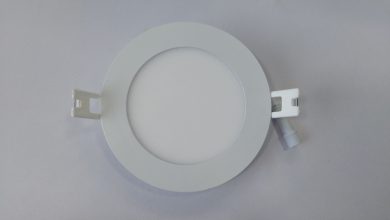Understanding Macro Calculators: A Comprehensive Guide to Mastering Your Nutrition and Fitness Goals
Master Your Nutrition with a Macro Calculator

Introduction
In today’s health-conscious world, everyone is looking for ways to optimize their nutrition and achieve their fitness goals. Whether you’re aiming to lose weight, build muscle, or simply maintain a healthy lifestyle, understanding your macronutrient needs is key. That’s where a macro calculator comes in handy. A macro calculator is an essential tool that helps you determine the right balance of macronutrients — proteins, fats, and carbohydrates — tailored to your specific needs. In this guide, we’ll dive deep into how macro calculators work, why they’re important, and how you can use one to take your nutrition and fitness journey to the next level.
What is a Macro Calculator?
A macro calculator is a tool designed to help you calculate your daily macronutrient requirements based on various factors such as age, weight, height, activity level, and fitness goals. The three primary macronutrients — proteins, fats, and carbohydrates — play different roles in your body. Proteins are crucial for muscle repair and growth, fats are essential for hormone production and cell health, and carbohydrates are the body’s main source of energy.
Understanding the right balance of these nutrients is crucial for achieving your health and fitness goals. By inputting your details into a macro calculator, you receive a personalized breakdown of how many grams of each macronutrient you should consume daily.
Why Use a Macro Calculator?
1. Tailored Nutrition for Individual Goals
A macro calculator provides personalized nutrition guidance, allowing you to adjust your intake of proteins, fats, and carbohydrates according to your specific goals. Whether you’re looking to lose fat, gain muscle, or maintain your current physique, a macro calculator ensures you’re fueling your body with the right nutrients in the correct amounts.
2. Improves Dietary Awareness
Using a macro calculator increases your awareness of what you’re eating. It encourages you to pay closer attention to the nutritional content of your food, which can lead to healthier eating habits and better overall dietary choices.
3. Helps Maintain Consistency
Consistency is key in any fitness journey. A macro calculator helps you stay on track by providing daily targets. By consistently meeting these targets, you can make steady progress toward your goals.
4. Supports Flexible Dieting
One of the great benefits of using a macro calculator is that it supports flexible dieting. Unlike rigid meal plans, flexible dieting allows you to eat a variety of foods, as long as they fit within your daily macro targets. This flexibility can make it easier to stick to your nutrition plan in the long term.
How to Use a Macro Calculator
Using a macro calculator is simple, but there are a few steps to ensure you get the most accurate results:
1. Input Your Personal Information
Enter your age, gender, height, weight, and activity level. These factors are essential for calculating your Basal Metabolic Rate (BMR), which is the number of calories your body needs at rest.
2. Set Your Fitness Goals
Decide whether your goal is to lose weight, gain muscle, or maintain your current weight. Your macro needs will vary depending on your goal. For instance, those looking to gain muscle will need a higher protein intake, while those aiming for weight loss might require a higher protein but lower carbohydrate intake.
3. Choose Your Macro Ratio
Most macro calculators provide suggested macro ratios based on your goals, but you can also customize your own. A common ratio for those aiming to lose weight might be 40% protein, 30% fats, and 30% carbohydrates. For muscle gain, the ratio could be 40% carbohydrates, 30% protein, and 30% fats.
4. Review and Adjust Your Results
Once you have your macro breakdown, you can adjust it according to how your body responds. It’s essential to track your progress and make adjustments as needed.
Common Macro Ratios for Different Goals
Different goals require different macronutrient ratios. Here’s a quick breakdown of common macro ratios for various objectives:
- Weight Loss: 40% protein, 30% fats, 30% carbohydrates
- Muscle Gain: 40% carbohydrates, 30% protein, 30% fats
- Maintenance: 30% protein, 30% fats, 40% carbohydrates
- Endurance Training: 55% carbohydrates, 25% fats, 20% protein
Benefits of Tracking Your Macros
1. Promotes Balanced Nutrition
Tracking macros ensures you’re getting a balanced diet that includes all three macronutrients in appropriate amounts. This balance is crucial for optimal body function and overall health.
2. Enhances Weight Management
For those looking to lose or gain weight, tracking macros can be more effective than simply counting calories. By focusing on macronutrient composition, you ensure you’re losing fat and preserving muscle, or gaining muscle rather than just fat.
3. Supports Athletic Performance
Athletes and fitness enthusiasts often need more precise nutrition to perform at their best. Tracking macros can help them tailor their diet to meet the demands of their training and competition schedules.
Potential Challenges and Solutions
While using a macro calculator can be incredibly beneficial, there are some challenges you might face:
1. Difficulty in Tracking Food Intake
Tracking every bite of food can be daunting, especially when dining out or consuming homemade meals. Solution: Use a food diary app or digital tool that allows you to log your meals easily. Many apps also have a database of common foods and their nutritional content, making tracking simpler.
2. Adjusting to New Eating Habits
Shifting to a macro-focused diet can be challenging if you’re used to eating without restrictions. Solution: Start by gradually adjusting your diet to meet your macro goals. Small changes over time are more sustainable than drastic shifts.
3. Plateaus and Stagnation
Hitting a plateau is common in any fitness journey. Solution: Reassess your macro intake and adjust as needed. Your body’s needs can change over time, especially as you lose weight or gain muscle.
Unique Status Ideas Related to Macro Tracking
Here are some unique status updates that can add a fun twist to your macro tracking journey:
- “Macros are like a balanced friendship — too much or too little of any can throw everything off.”
- “Counting my blessings and my macros!”
- “Macros in check, goals in sight. Let’s crush it!”
- “They say abs are made in the kitchen… better get my macros right!”
- “Building my body, one macro at a time.”
- “Macros: the only thing I’m counting these days!”
- “Life’s too short for bland food — let’s make those macros work!”
- “Hitting my macro goals, one meal at a time.”
- “In a committed relationship with my macro calculator.”
- “Balancing life, work, and macros… who says I can’t do it all?”
Conclusion
A macro calculator is a powerful tool that can significantly enhance your nutrition strategy, helping you achieve your health and fitness goals more effectively. By understanding and balancing your macronutrient intake, you can tailor your diet to suit your individual needs, whether that’s losing weight, building muscle, or maintaining a healthy lifestyle. Start using a macro calculator today to see how a more precise approach to nutrition can make all the difference in your fitness journey.
Call to Action
Ready to take your nutrition to the next level? Use our free macro calculator to find out your personalized macronutrient needs and start your journey toward a healthier, fitter you today! Share your progress with us using #MacroMastery, and let’s achieve our goals together!








